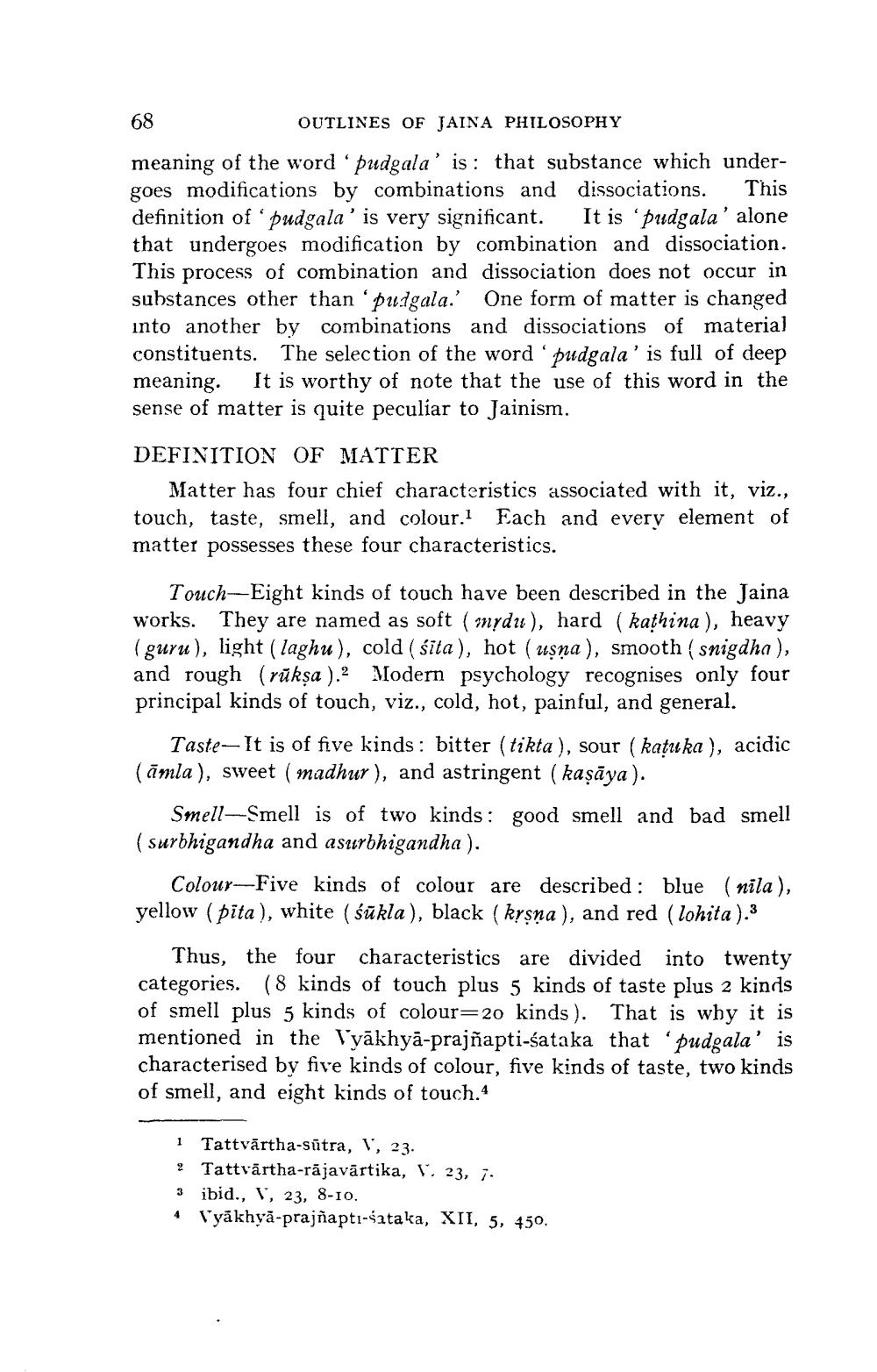________________
68
OUTLINES OF JAINA PHILOSOPHY
meaning of the word 'pudgala' is: that substance which undergoes modifications by combinations and dissociations. This definition of pudgala’ is very significant. It is 'pudgala' alone that undergoes modification by combination and dissociation. This process of combination and dissociation does not occur in substances other than 'pudgala.' One form of matter is changed into another by combinations and dissociations of material constituents. The selection of the word 'pudgala' is full of deep meaning. It is worthy of note that the use of this word in the sense of matter is quite peculiar to Jainism.
DEFINITION OF MATTER
Matter has four chief characteristics associated with it, viz., touch, taste, smell, and colour. Each and every element of matter possesses these four characteristics.
Touch-Eight kinds of touch have been described in the Jaina works. They are named as soft ( mydıı), hard (kathina), heavy (guru), light (laghu), cold (sita), hot (uşna), smooth (snigdha), and rough (rūkṣa ).2 Modern psychology recognises only four principal kinds of touch, viz., cold, hot, painful, and general.
Taste- It is of five kinds: bitter (tikta), sour (katuka), acidic (āmla), sweet ( madhur), and astringent ( kaṣāya).
Smell-Smell is of two kinds: good smell and bad smell (surbhigandha and asurbhigandha).
Colour-Five kinds of colour are described: blue (nila), yellow (pita), white ( śūkla), black ( krsna), and red (lohita).3
Thus, the four characteristics are divided into twenty categories. (8 kinds of touch plus 5 kinds of taste plus 2 kinds of smell plus 5 kinds of colour=20 kinds). That is why it is mentioned in the lyākhyā-prajñapti-śataka that 'pudgala' is characterised by five kinds of colour, five kinds of taste, two kinds of smell, and eight kinds of touch.
1 Tattvārtha-sūtra, 1, 23. 2 Tattvārtha-rājavārtika, 1. 23, 7. 3 ibid., 1, 23, 8-10. 4 V'yākhyā-prajñaptı-sataka, XII, 5, 450,




